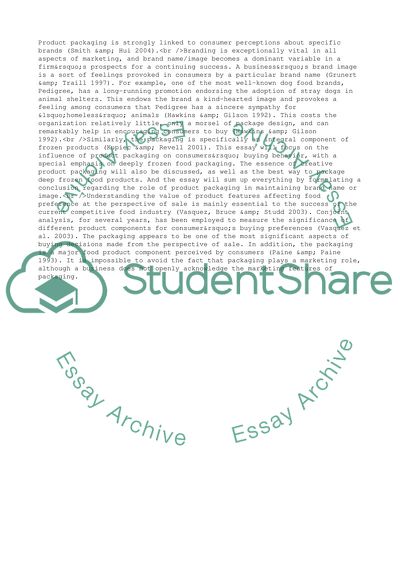Cite this document
(The Importance Of Packaging In Building Essay Example | Topics and Well Written Essays - 2000 words, n.d.)
The Importance Of Packaging In Building Essay Example | Topics and Well Written Essays - 2000 words. Retrieved from https://studentshare.org/business/1567221-how-can-package-influence-the-brand-nameimage
The Importance Of Packaging In Building Essay Example | Topics and Well Written Essays - 2000 words. Retrieved from https://studentshare.org/business/1567221-how-can-package-influence-the-brand-nameimage
(The Importance Of Packaging In Building Essay Example | Topics and Well Written Essays - 2000 Words)
The Importance Of Packaging In Building Essay Example | Topics and Well Written Essays - 2000 Words. https://studentshare.org/business/1567221-how-can-package-influence-the-brand-nameimage.
The Importance Of Packaging In Building Essay Example | Topics and Well Written Essays - 2000 Words. https://studentshare.org/business/1567221-how-can-package-influence-the-brand-nameimage.
“The Importance Of Packaging In Building Essay Example | Topics and Well Written Essays - 2000 Words”, n.d. https://studentshare.org/business/1567221-how-can-package-influence-the-brand-nameimage.


